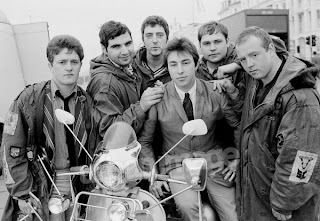"My dream?
To make women happier and more beautiful" - Christian Dior.
(Vogue.com UK, 2012)
21st January 1905 - 23 October 1957
(Keenan, 1981)
Dior first had the idea of setting up his own
fashion house in 1946, when he inspected an old friend’s dressmakers (Philippe
et Gaston) but found it a hopeless case to work with, and in reality he wanted to
create his own designs with no one looking over his shoulder; he could not
stand the idea of working in someone else’s house again. Dior (2007) stated that he relied
heavily on the predictions of fortune tellers, one of them told him: “Women are lucky for you, and
through them you will achieve success. You will make a great deal of money out
of them, and you will have to travel widely”. Who would have knew that this was
about to come true? This was the start of the New Look.
The New Look
Keenan (1981) reveals that one of the
inspirations of the New Look was the memories of how his mother dressed before
she died in 1931, as she was very feminine and elegant which was the complete opposite of the masculine utility styles of the 1940s. His mother’s death also
motivated him to explore his interest in architecture, which formed the basis of his
interests in the structure of women’s clothing.
Dior's mother
An example of one of his collections which was influenced on his passion
of architecture; the silhouette of this outfit represents the shape of the Eiffel Tower.
Controversial Aspects of the New Look
The New Look fitted perfectly with the
Government’s ideal direction for women’s independence, which was backwards despite
their efforts in the war. Women were expected to go back to their old ways and
become the stereotypical decorated house-wife once again. Dior’s feminine
flower-shape silhouettes advertised this want from society as the
wasp-stung waist was back in fashion. Dior himself commented on the complaints and threats that he received: “The
New Look brought me heavy mail.
Letters arrived by the thousands––mostly enthusiastic but some indignant. A garage owner from Los
Angeles wrote and told me that he had sworn to "tear me
apart" on his next visit to Paris.
According to him, it was my fault that his wife looked like a stuffed doll of
the time of the Civil War” (Enjoy Your Style, 2012).
Left: A Dior corset from the '50s; instead of dangering women's health, he attached ruffles to the hips to create the wasp-stung waist.
Right: A woman protesting against the feminine styles of Dior's dresses in front of Dior and his models
The economic side to his collections also made
his work almost frowned upon. Even the most basic materials were hard to get
after the war due to the economic downfall it lead to, yet Dior was able to get
his hands on masses of luxurious fabrics to create his huge padded and ruffled
skirts. Barely anyone could afford the new collections anyway as a lot of women
still relied on coupons to buy their clothes with.
The evening dress and the "Flower Woman" skirt used heavy and excessive amounts of material








.jpg.jpg)





























.jpeg)










